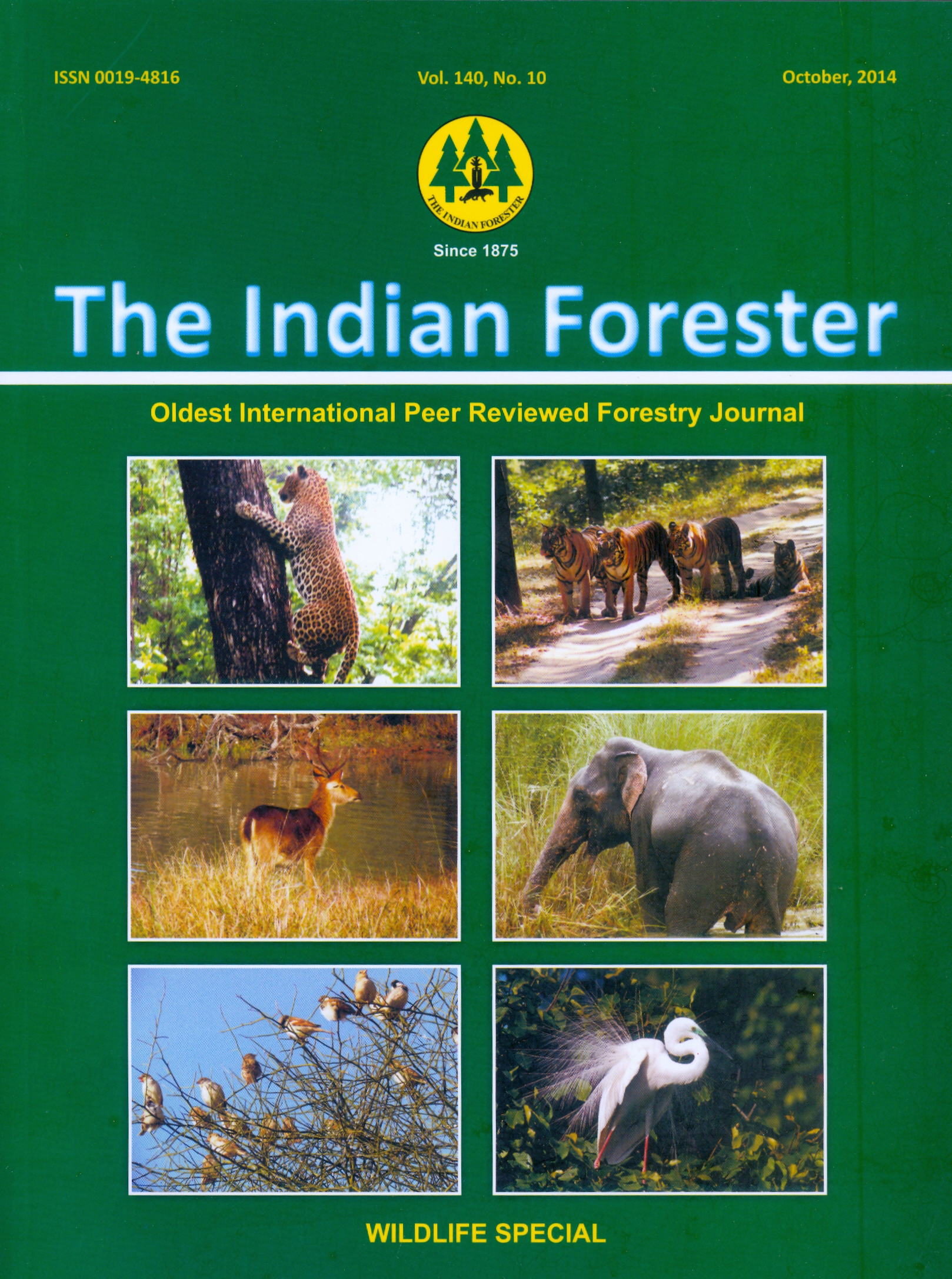loristic Diversity Assessment of Nokrek Biosphere Reserve, Meghalaya
DOI:
https://doi.org/10.36808/if/2014/v140i10/53496Keywords:
Biosphere, Core, Buffer, Shannon IndexAbstract
Vegetation assessment of the forest ecosystem of Nokrek Biosphere Reserve was carried out at 4 sites (2 in the core and 2 in the buffer region) of the reserve to provide baseline information on the biodiversity status of the biosphere. A total of 146 species were recorded from the four study sites, out of which 68 were trees, 35 shrubs and 44 herb species. Sites at the buffer zone had higher number of plant species and plant density compared to those in the core region. Tree density across sites ranged from 1020 to 1320 individuals per ha. Highest IVI was obtained for Syzygium syzygoides and Duabanga grandiflora for sites in the buffer region while Syzygium operculatum and Actinodaphne oboata dominated the core zones. Herb and shrub layer density was found to be high in areas with intermediate disturbance and open canopy cover.References
Balodi B. (1993). Expedition to Nanda Devi: Floristic Analysis. In: Scientific and Ecological Expedition Nanda Devi, 2nd May to 22nd July 1993.Army Corps of Engineers, Delhi.
Bruner A.G., Gullison R.E., Rice R.E. and da Fonseca G.A.B., (2001).Effectiveness of parks in protecting tropical biodiversity, Science, 291:125–128
Champion H.G. and Seth S.K. (1968). A revised survey of the forest types of India: Oxford Press, New Delhi, India, 404pp.
Curtis J.T. (1959). The Vegetation of Wisconsin, An Ordination of Plant Communities. University Wisconsin Press, Madison. Wisconsin Curtis J.T. and McIntosh R.P. (1950). The interrelations of certain analytic and synthetic phytosociological characters, Ecology, 31: 434-455.
Dhar U., Rawal R.S. and Samant S.S. (1997). Structural diversity and representativenenss of forest vegetation in a protected area of Kumaon Hinalaya, India, Implications for conservation, Biodiversity Conservation, 6:1045-1062.
Gillet F., Murisier B., Buttler A., Gallandat J. and Gobat J. (1999). Influence of tree cover on the diversity of herbaceous communities in subalpine wooded pastures, Applied Vegetation Science, 2: 47-54.
Joshi N.V and Suresh H.S. (1997). Hierarchical Partitioning of Tree Diversity Across Spatial Scales: A case Study from the Nilgiri Biosphere Reserve, Southern India, International Journal of Ecology and Environmental Sciences, 23:185-196,
Kumar A., Marcot B.G. and Saxena A. (2006). Tree species diversity and distribution patterns in tropical forests of Garo Hills, Current Science,91(10): 1370-1381.
Macdonald I.A.W., Loope L.L., Usher M.B. and Hamann O. (1989). Wildlife conservation and the invasion of nature reserves by introduced species: a global perspective. In: Biological invasions: a global perspective (J.A. Drake, H.A. Mooney, F.di Castri, R.H. Groves, F.J.Kruger, M. Rejmanek and M. Williamson, eds) John Wiley and Sons. pp. 281-300.
Margalef D.R. (1958). Information theory in ecology. Gen Syst., 3:36–71.
Mishra R.K., Upadhyay V.P. and Mohanty R.C. (2008). Vegetation Ecology Of The Similipal Biosphere Reserve, Orissa India, Applied Ecology and Environmental Research, 6(2): 89-99.
Misra R. (1968): Ecology Work Book. – Oxford & IBH Publishing Co., New Delhi
Shannon C.E. and Weaver E.W. (1949). The mathematical theory of communication. Univ. of Illinois. Simpson E.H. (1949). The Measurement of Diversity. Nature, 163: 688.
Sudhakar S. and Reddy C.S. (2005). Conservation of Ecologically Sensitive Areas – Hotspots of India – An Integrated Approach through RemoteSensing and GIS. Technical Report.RSAM, Bangalore. 68pp.
Tripathi O.P., Pandey H.N. and Tripathi R.S. (2008). Effects of human activities on structure and composition of woody species of the Nokrek Biosphere Reserve of Meghalaya, North-East. India, Chinese Journal of Plant Ecology, 32(1): 73-79.
Uniyal P., Prerna P., Sabyasachi D., Dinesh B. and Todaria N.P. (2010). Plant diversity in two forest types along the disturbance gradient in Dewalgarh Watershed, Garhwal Himalaya, Tropical Ecology, 49(2):189-197.
Whitford P.B. (1949). Distribution of woodland plants in relation to succession and clonal growth, Ecology, 30: 199-208.
Downloads
How to Cite
Issue
Section
License
Unless otherwise stated, copyright or similar rights in all materials presented on the site, including graphical images, are owned by Indian Forester.





